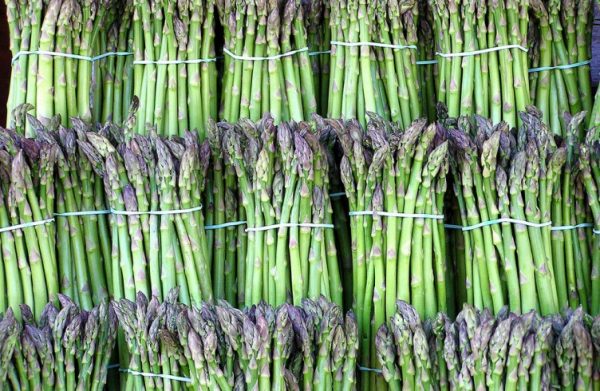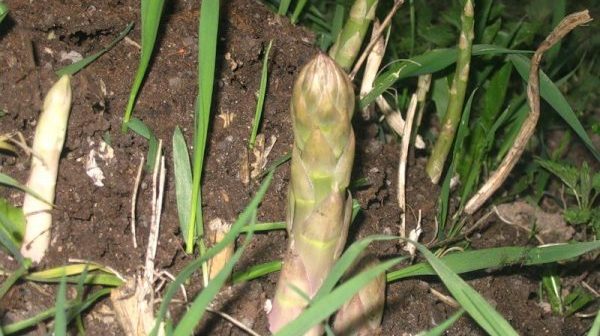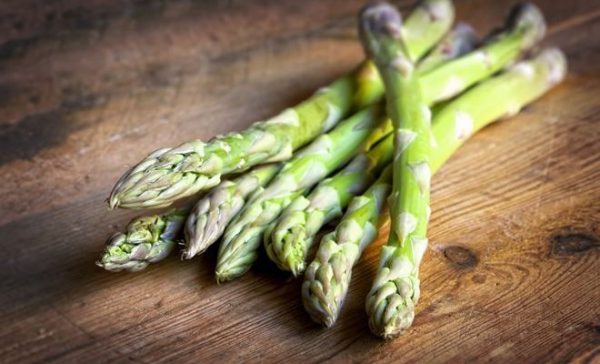How is asparagus grown from seeds in the country
Content
Growing from seeds
Sowing asparagus seeds can be done in two ways: directly into the soil in the garden, and in a pot or container, followed by transplanting seedlings. Sowing in open ground is carried out in warm soil in late May - early June. Asparagus seeds germinate for a long time - if you do not carry out preparatory work, the first shoots can be expected only after 25-30 days.
To speed up this process, it is recommended to soak the seed in warm water (35-40 ° C), place the container in a warm place for several days, constantly making sure that the water does not evaporate. Next, the soaked seeds are laid out between two layers of damp paper or cloth, and placed in the heat for another week, constantly moistening the material. Sprouted seeds are sown in prepared holes (rows), deepening into the ground by no more than 2 cm. Properly prepared seed germinates in 8-10 days.
The second method - growing seeds in pots, allows you to sow the planting material a few weeks earlier, and plant already matured seedlings in the garden, which by autumn will turn into young plants that can survive the winter. For sowing in pots, the seeds are germinated in the same way as for planting in the garden, but the germination process itself begins earlier, around the beginning of April. The soil for growing seeds in a pot should be light and consist of the following components: 2 parts of land taken from the garden, sand, peat and rotted manure in 1 part.
Sprouted seeds are laid on the surface of moist soil, after which they are covered with a layer of earth of 1 cm. To create greenhouse conditions, the container with the planted seeds is covered with glass until shoots appear. The upper bulk soil layer must be moistened daily from a spray bottle, while removing the glass for ventilation.
It is better to choose small pots for planting seeds. In flower shops, you can purchase special disposable pots, or use any containers that are unnecessary in the household. When deciding to plant an asparagus crop in the country, you need to understand that this will take time and patience, because growing asparagus from seeds is not so easy.
Propagation of asparagus seedlings
Asparagus seedlings are grown from germinated seeds, which are sown in small containers in early spring (March-April). For planting seeds, it is convenient to use disposable pots or cups so that the young plant can later be removed without damaging the root system.
When the sprouts in the pots grow a little, they need to start hardening. For this, the seedlings are taken out into fresh air and sunlight. It is common for asparagus to react quickly to the sun, therefore it is very important to observe the light regime - to put the plants in the sun dosed, and gradually increase the hardening time. Otherwise, the young plant may become too elongated.
Asparagus is considered a seedling not only during the transformation of seeds into young shoots, but also in the first year of its life. This is a perennial crop (the bush lives for 10-20 years), and the plant will become adult only by next spring. After planting seedlings in the garden, the bush is formed until the fall, after which it is cut off in the fall, and the next spring it is dug up again and transplanted to a place of constant growth.
Video "Growing in a vegetable garden"
Demonstration video for gardeners and gardeners.
Landing in the ground
You can plant mature seedlings in open ground in the first half of June. Growing asparagus in your country house or garden plot should take place in light, loose and nutritious soil, which must be prepared in advance. It is advisable to select the most fertile area for planting, since the culture is quite demanding on the soil. In addition, in the fall, manure or humus must be added to the soil, and in the spring, before planting, compost or superphosphate is 0.4-0.7 kg / m. sq., as well as potassium fertilizer.
In the garden, young seedlings are planted in holes arranged in rows. The distance between the rows should be 20-25 cm, between the holes 10-15 cm.Next year, when the young bush will be transplanted to a permanent place, the distance between the rows will need to be increased to 50-70 cm, and between the holes up to 40 cm.
With proper care, young seedlings by autumn turn into a bush 20-40 cm high with 4-5 shoots. Before the onset of frost, the ground part of the bush is cut off so that about 10 cm remains on the surface.In this state, the asparagus will winter. In the spring of next year, the seedlings are dug up, the poorly developed roots are separated, the remaining ones are shortened to a length of 3-5 cm, and placed in new holes. The roots are buried 6-10 cm in the ground, the soil is compacted, and then watered well.
You can also not dig up young plants in the first year, but leave the transplant in the spring of the second year of life. Such bushes will be stronger and larger. When planting an already overgrown asparagus in the country, you should use the trench method, in which the rows are located at a distance of 1 m, and the grooves reach a width of 40 cm.Under each bush you need to put a little compost or humus, straighten and lay the roots, fill up some of the soil, compact it well , then fill in the rest of the earth.
How to care for
After planting in the garden, young plants need to be properly cared for. In the summer, it consists in watering, timely fertilizing, weeding row spacings and loosening the soil. Autumn care involves cutting off the stems and wrapping up the bushes for wintering.
Watering should be carried out as needed, systematically, in small portions. It is necessary to maintain normal moisture in the soil, since excessive drying, as well as excess moisture, does not benefit the plants. It is necessary to loosen the soil after each watering or weeding. If the seeds were grown in the open field, then the first weeding should be done as soon as the first 2 leaves appear on the plants, while removing the weakest shoots.
In the fall, before frost, shoots from asparagus bushes should be cut off, and the bed should be sprinkled with a layer of organic fertilizers: humus, compost, peat, and then covered with dry foliage. This process is repeated every year. In order to make it easy to find a garden in the spring, the rows are marked with stakes. In the third year, in spring, the plants need to be spud to a height of 20-30 cm, the upper layer of the ridge should be slightly compacted - cracks that will form on the surface will indicate where the shoot sprouts.
Growing asparagus in the country is impossible without regular feeding. You need to fertilize asparagus plantings several times per season:
- a month after sowing seeds or planting seedlings, the garden bed is fertilized with nitrate 20-30 g / m. sq., or liquid mullein at a concentration of 1: 8;
- then 40 g of superphosphate / bucket is added to this solution, and watering is carried out 1 time / month;
- during flowering, plants are treated with insecticides for preventive purposes;
- in July, the growth of shoots begins to gradually recover, so another feeding is required, for example, bird droppings 1 part / 10 parts of water;
- the last feeding is carried out before the onset of frost, at the end of October - superphosphate and potassium chloride 30 g / m. sq. will stop the growth of shoots and help to survive the winter;
- in the spring, in the second and subsequent years of life, asparagus is fed with a mineral mixture containing nitrogen, potassium and phosphorus before the onset of the growing season.
Before the onset of winter, the soil is dug up between the rows. In the early years, while there is still no harvest, it is possible to grow vegetable crops in the aisles: radishes, beans, salad greens.
Harvesting
Asparagus is harvested by young asparagus sprouts that are underground, or have recently made their way to the surface. Since they lacked light, their stems are light in color, are particularly fleshy, and therefore suitable for human consumption. Harvesting begins in early May (this is the earliest vegetable in the new season) and lasts 1-2 months. Throughout May - June, you can collect young healthy shoots every 1-2 days.
To get an earlier harvest, you need to plant early maturing asparagus. There are not so many varieties of this culture. For our latitudes, such early ripening varieties as "Arzhentelskaya early" and "Early yellow" are suitable. These varieties are distinguished by faster vegetation, white or greenish large juicy shoots with a mild taste.
The first crop can be harvested from a plant that has reached 3-4 years of age. In the spring, after hilling the bush, you need to monitor the condition of the soil. When cracks appear in the ground, it means that the asparagus sprouts are starting to sprout and it's time to harvest. The soil and mulch must be carefully raked off, and the young shoot cut off in the place where its growth begins. Then the asparagus bush is again covered with mulch so that new shoots germinate in it. Shoot growth stops at the end of June. The plant must be freed from mulch and poured soil, after which top dressing with organic and mineral fertilizers: liquid humus, ammonium nitrate
When raking a bush, you can find hemp left over from cut shoots. They must be removed, as the cuts can rot and lead to infection of the entire bush. After applying top dressing, the roots must be covered with earth, and the surface must be leveled. The plants are now ready for the next season.
Video "How is the landing"
Demonstration video with tips and tricks.









